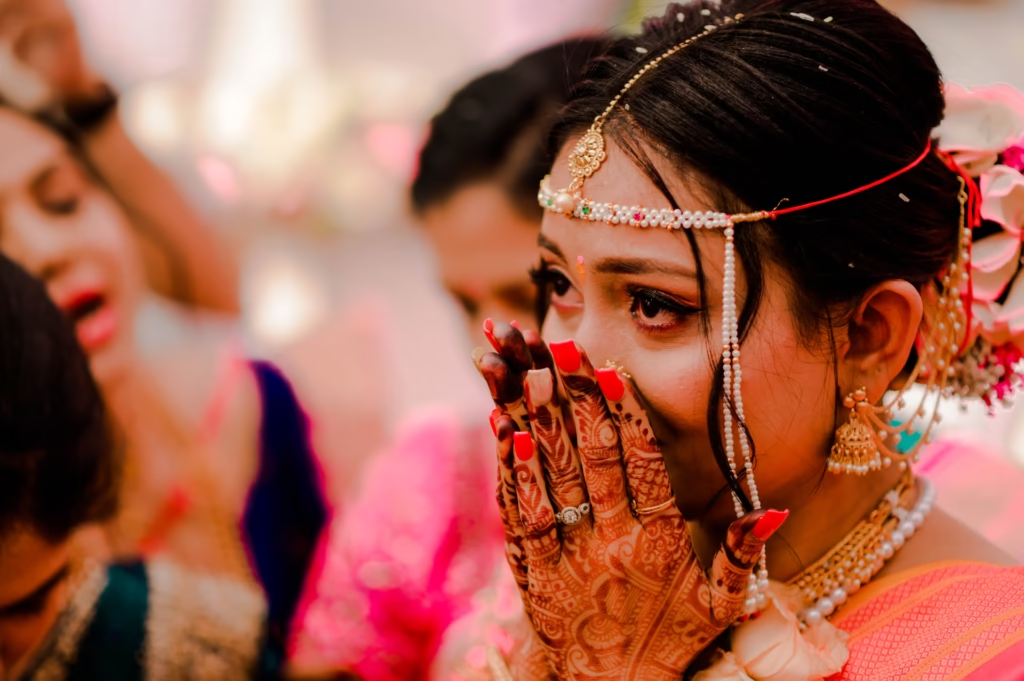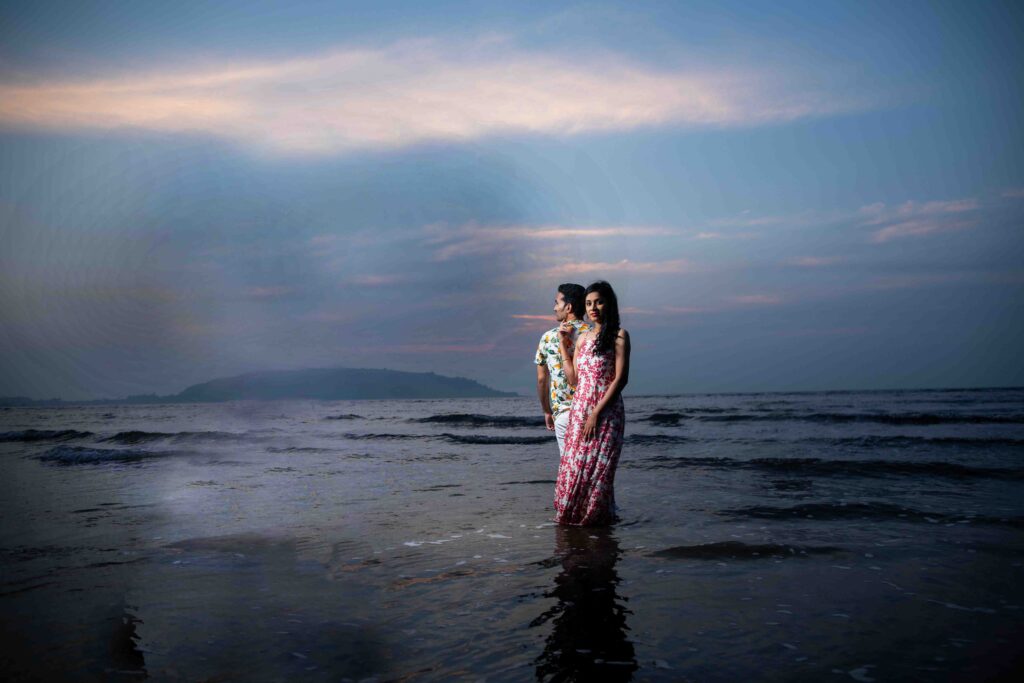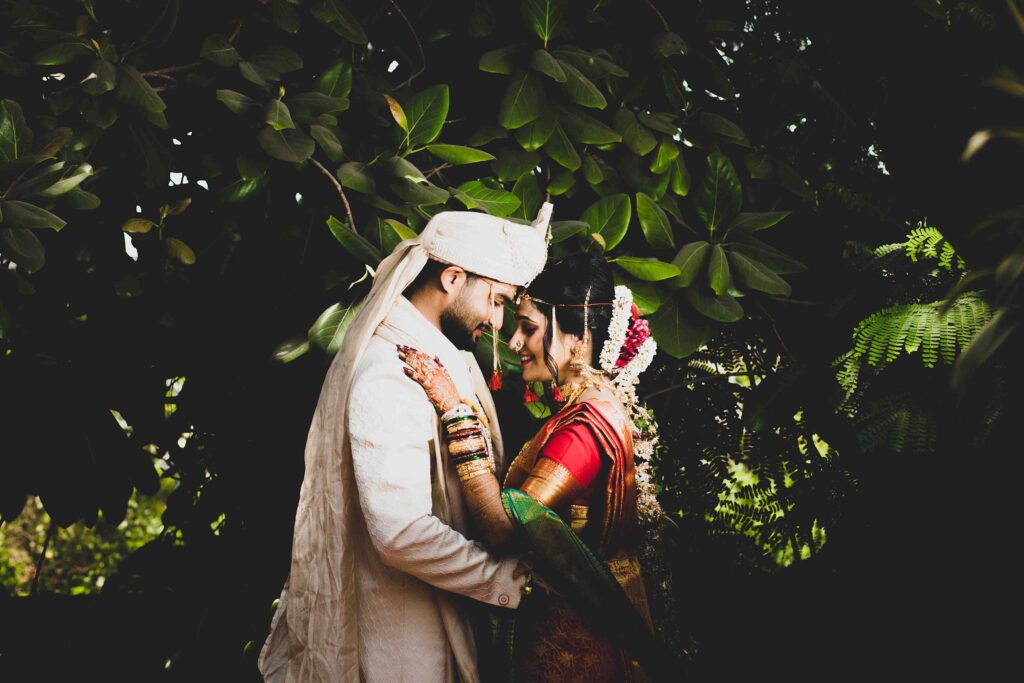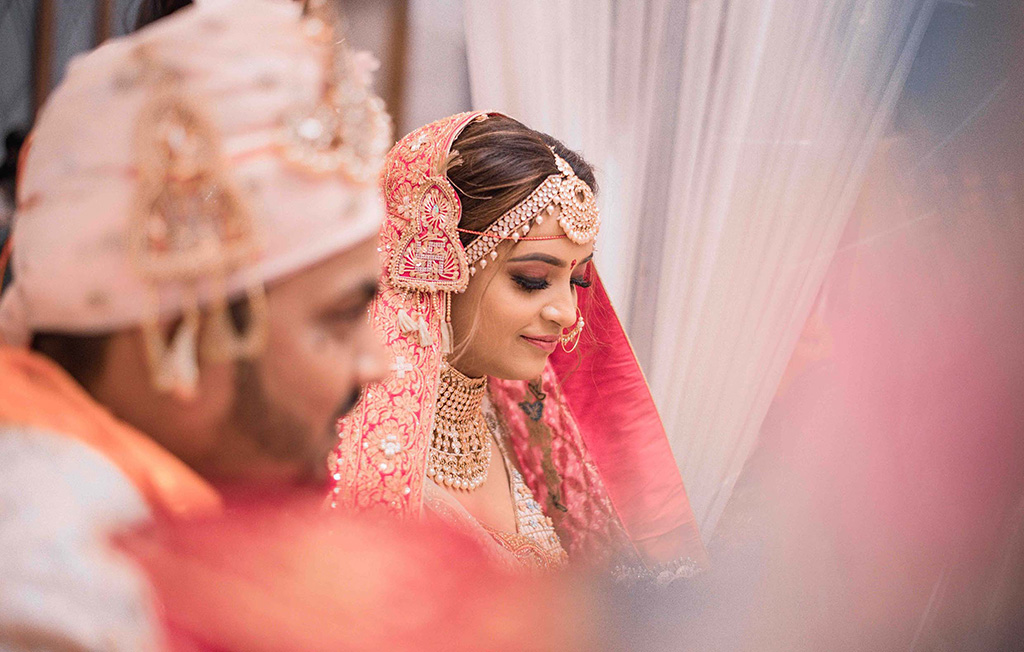wedding photography is an art form, a way of immortalizing one of the most important days in a couple’s life. It is a visual storybook of the love, emotions, and celebrations that surround a wedding day. wedding photography Through the lens of a camera, photographers capture not just the events, but the essence of the love between two people and the people who surround them. Every moment — from the quiet exchange of vows to the exuberant first dance — is filled with emotions, meaning, and stories. In this article, wedding photography we will delve deeply into how wedding photography captures love in its many forms and why it is so integral to the celebration of a union.
The Art of Wedding Photography: A Love Story in Every Frame wedding photography
At its core, wedding photography is about storytelling. A skilled photographer doesn’t just take pictures; they document a narrative of love, devotion, and commitment. Through each image, they portray not only the couple but also the environment, the people, and the emotions surrounding the day.
wedding photography photos encapsulate the love between two individuals but also the bonds shared with family and friends. The photographer’s role is to capture fleeting moments that may go unnoticed by others: the tearful glance exchanged between the bride and her parents, the joy in the groom’s eyes as he sees his bride for the first time, or the warmth in the embrace of lifelong friends celebrating the couple’s union.
The Significance of Capturing Love wedding photography
wedding photography Love is the central theme of any wedding, and wedding photography seeks to immortalize this powerful emotion. wedding photography Love is present in every moment of the wedding day, from the anticipation before the ceremony to the final moments when the couple leaves the reception. It is the photographer’s duty to capture these moments, ensuring that the couple has a timeless keepsake to cherish for years to come.
wedding photography serves as a way to preserve and celebrate the joy of love in its purest form. The couple’s connection is the heart of the day. Wedding photos can freeze this connection in time — the way the couple looks at each other, how their hands touch, or how their smiles light up the room. These moments, though brief, are the essence of love.
Preparing for the Big Day: Setting the Stage for Love wedding photography
A wedding photography wedding is an event filled with many moving parts, and preparation is key. The first step in capturing the love in a wedding is to establish a clear understanding between the photographer and the couple about their expectations. wedding photography Many couples want to make sure that their wedding photos represent their personalities and the unique bond they share. Through engagement sessions, pre-wedding shoots, and in-depth conversations, photographers gain insight into the couple’s relationship dynamics, style preferences, and emotional connection.
This wedding photography preparation goes beyond just knowing the best places for portraits or the preferred lighting conditions. wedding photography It’s about understanding what the couple values most — whether it’s the quiet moments, the laughter with family, or the grandeur of the ceremony itself. A talented photographer will know when to step back and let love unfold naturally, and when to guide the couple into a more intimate or picturesque pose that still feels authentic to the relationship.

The Wedding Day: Capturing the Essence of Love wedding photography
On the wedding day, a wedding photography role is not just to document events but to capture the emotions and love that make the day so special. Each moment is rich with significance, and the photographer must be ready to capture it as it happens. wedding photography From the early morning preparations to the late-night celebrations, each phase of the wedding day tells a different aspect of the couple’s story.
1. The First Look wedding photography
wedding photography For many couples, the first look is one of the most emotional moments of the day. It’s the first time the couple sees each other in their wedding attire, and the emotions are often overwhelming. The photographer’s job during this moment is to capture the raw emotion of the couple’s reactions without disrupting the intimacy of the scene. Whether it’s the bride’s gasp of surprise or the groom’s tear-filled smile, these moments can be some of the most powerful photographs of the day.
2. The Ceremony wedding photography
wedding photography the wedding ceremony itself is a time when love is publicly declared. It’s a moment of great significance, where vows are exchanged, promises are made, and the couple is bound together in front of their closest friends and family. The photographer’s role here is to document both the grandeur and the intimacy of the ceremony. Wide shots of the venue, close-ups of the couple as they exchange vows, and candid moments of family members’ reactions all add to the richness of the story.
3. The Family Moments wedding photography
Weddings are a celebration not just of the couple but also of the families coming together. The photographer must capture the joy, the pride, and the love expressed by parents, siblings, and extended family members. Family portraits are often an essential part of wedding photography, and the photographer must approach them with sensitivity and creativity. The goal is to create images that highlight the connections between family members while also reflecting the unique bond that each individual shares with the couple.
4. The Reception: A Celebration of Love wedding photography
After the ceremony, the wedding reception is the place where love is celebrated in full force. The reception often involves heartfelt speeches, emotional dances, and joyous moments of laughter. It’s a time for guests to show their love and support for the newlyweds, and a skilled photograph In wedding photography, the way light interacts with the subjects is a crucial element in portraying emotion. Light can evoke different moods and help tell the story in a more profound way. wedding photography Soft, natural light is often used to capture intimate moments, while dramatic lighting can heighten the intensity of more passionate or celebratory moments.
Composition is equally important in wedding photography. A well-composed image can bring focus to the love shared by the couple while minimizing distractions. wedding photography use techniques such as leading lines, framing, and the rule of thirds to create visually striking images that highlight the subjects in the best possible way.
Authenticity and Emotional Depth wedding photography
What sets great wedding photography apart is its authenticity. A truly great wedding photography can capture not only the obvious moments — like the bride walking down the aisle — but also the fleeting, subtle moments of connection. wedding photography Whether it’s a glance shared between the couple before the ceremony or a quiet moment of reflection during the reception, it’s these candid moments that often hold the deepest emotional weight.
wedding photography also work to capture the emotions of the couple and their loved ones without interfering with the natural flow of events. This is what makes candid and documentary-style wedding photography so special. Instead of posed shots, the wedding photography becomes a silent observer, capturing the raw, unfiltered love that unfolds throughout the day.
The Final Product: A Love Story Preserved Forever wedding photography
After the wedding photography wedding day has ended, the wedding photography remain as timeless memories. wedding photography A wedding album is more than just a collection of pictures; it’s a carefully curated storybook that reflects the unique love and journey of the couple. Each photograph is carefully selected and edited to create a cohesive narrative, ensuring that the couple can relive their day in a way that feels true to the emotions they experienced.
wedding photography In today’s digital age, many couples also receive high-resolution images for their own personal use. These images can be shared with friends and family, displayed in homes, or printed in custom photo books. The photographs become a way to share the love and joy of the wedding day with others, allowing the couple to relive their special day whenever they wish.

The Positive Emotional Dynamics in wedding photography
wedding photography are celebrated as a time of love, commitment, and happiness. These positive emotions are integral to the experience and influence the behavior of everyone involved. The emotional highs of the couple, their families, and the guests provide unique opportunities for wedding photography to capture the essence of the celebration.
1. Love and Connection Between the Couple wedding photography
wedding photography The love between the bride and groom is the cornerstone of a wedding, and this powerful emotion is often the most beautiful aspect to capture. The wedding photography ability to capture intimate moments between the couple, whether it’s a quiet glance, a gentle touch, or a shared laugh, is critical to conveying the deep bond they share. wedding photography These moments are often spontaneous, and the best wedding photographers are those who can blend into the background, allowing the couple to interact naturally while still being ready to capture these priceless moments.
wedding photography taken during moments such as the first look, the exchange of vows, and the first dance showcase the couple’s love and commitment to one another. The emotions surrounding these moments are raw and pure, making them some of the most cherished photos of the day. Photographers who understand how to preserve these emotional connections with sensitivity and discretion create images that reflect the true spirit of the couple’s relationship.
2. Family and Friends’ Emotional Joy wedding photography
A wedding photography is often a reunion of families and friends who have come together to celebrate a significant event in the lives of the couple. The joy of witnessing a loved one’s marriage brings a deep sense of happiness and celebration. Parents, particularly the bride’s parents, may experience a mixture of pride, joy, and bittersweet emotions as they watch their child get married. A talented photographer will capture the nuanced expressions of pride, joy, and love that family members express, from a parent’s tearful gaze during the vows to the smile of the groom’s best man during a heartfelt toast.
wedding photography Photographers who are adept at reading these emotional cues can capture moments that reflect the depth of familial connections. wedding photography For example, photographs of the father of the bride during the father-daughter dance or the groom sharing a heartfelt moment with his mother may encapsulate the emotional richness of family bonds. These photos not only create beautiful memories but also provide an emotional narrative of the day, helping the couple and their families relive those cherished moments for years to come.
3. The Joy of Guests and Celebration wedding photography
A wedding is a public celebration, and the energy and joy of the guests can infuse the entire event with excitement. wedding photography Guests’ reactions—whether laughing, dancing, or cheering—bring life to the day and can help create dynamic, candid moments that highlight the fun and joy of the event. wedding photography Photographers can capture moments such as guests’ reactions to speeches, spontaneous laughter on the dance floor, or joyful group photos that convey the celebration’s atmosphere.
wedding photography The positive behavior of guests can significantly enhance the mood of a wedding, leading to an authentic and vibrant collection of images. wedding photography A good photographer knows when to step back and let the scene unfold naturally, allowing for candid shots that capture the exuberance and collective happiness of the event. These photographs will remind the couple not just of their love for each other, but of the collective joy shared by everyone who attended.
4. Positive Mood and Calmness of the Couple wedding photography
wedding photography While weddings can be stressful, many couples experience moments of calmness and contentment as they prepare for and enjoy their big day. wedding photography The positive emotional dynamics of these moments can lead to serene, peaceful wedding photography. Whether it’s the bride calmly preparing for the ceremony or the groom reflecting quietly before walking down the aisle, such moments present an opportunity for intimate, reflective photos that convey the beauty of the moment.
The wedding photography skill in recognizing when the couple is at ease can help them capture images that reflect the serenity of the day. wedding photography These moments of tranquility can be just as powerful as the more energetic moments of the celebration and contribute to the overall emotional tone of the wedding photography.

The Negative Emotional Dynamics in wedding photography
wedding photography While wedding days are filled with joy, they also come with a variety of challenges, and the negative emotional dynamics that arise can impact both the couple and the wedding photography. From pre-wedding jitters to unexpected stressors, wedding photography these dynamics can create tension that may affect the wedding photography ability to capture moments authentically. However, skilled photographers are prepared to handle these challenges with grace and professionalism.
1. Pre-Wedding Stress and Anxiety wedding photography
The lead-up to the wedding day is often a stressful time for the bride, groom, and their families. The process of organizing the event, wedding photography managing expectations, and dealing with last-minute changes can result in high levels of anxiety. The pressure of ensuring everything runs smoothly can cause tensions between family members, the couple, and even vendors. wedding photography The couple may have different ideas about what their wedding day should look like, leading to disagreements or emotional outbursts.
A wedding photography must be aware of these stressors and adapt their approach to help calm the situation. This may involve offering emotional support, giving space when needed, or using calming techniques to help the couple relax before key moments. A wedding photography who is attuned to these dynamics can make a big difference in helping the couple feel at ease, ensuring that the photographs capture authentic emotions without the interference of pre-wedding stress.
2. Tension Between Family Members wedding photography
wedding photography Weddings are not just about the couple; they are a union of families. Family dynamics, especially in complex or blended families, can create moments of tension. Conflicts between relatives, such as between divorced parents or family members with unresolved issues, may surface on the wedding day. wedding photography These emotional conflicts can affect the behavior of the individuals involved, making it challenging for the photographer to capture natural, joyful moments.
wedding photography must be careful to navigate these dynamics with tact and sensitivity. It’s essential to remain neutral, capturing moments without exacerbating the situation. For example, if there is tension between family members during family portraits, the wedding photography should be prepared to redirect or separate individuals to prevent conflict from affecting the photos. At times, photographers may need to act as mediators, offering reassurance and direction to ensure that the photography process remains smooth and everyone is accommodated.
3. Unwanted or Negative Behaviors from Guests wedding photography
While most guests attend weddings to celebrate, some may exhibit negative behaviors that disrupt the day. Overindulgence in alcohol can lead to unruly behavior, inappropriate comments, or even conflicts that can affect the mood of the celebration. In extreme cases, guests may act out in ways that create discomfort for the couple, their families, or other guests.
wedding photography are often tasked with capturing the energy and liveliness of the event, but when negative behavior arises, it can create challenges. Whether it’s a guest making inappropriate remarks during speeches or someone causing a scene on the dance floor, the wedding photography must be discreet and tactful in addressing the situation. wedding photography Capturing moments of chaos or discomfort can detract from the overall feel of the wedding album. The wedding photography professionalism in handling such situations, while maintaining their focus on the couple, is key to ensuring that the negative dynamics do not dominate the imagery.
4. Last-Minute Changes and Unforeseen Circumstances wedding photography
wedding photography Even the most meticulously planned weddings can be subject to unforeseen circumstances, such as bad weather, delayed schedules, or logistical issues. wedding photography These disruptions can cause stress and frustration for the couple and the wedding party, which may affect their emotional state and behavior. wedding photography When things do not go according to plan, the couple may feel disappointed or anxious, and this can impact the authenticity of their expressions.
A wedding photography ability to adapt to these changes is crucial. Photographers must be prepared to adjust their approach to handle last-minute changes without compromising the quality of the images. For instance, if the weather prevents an outdoor ceremony, the wedding photography must be resourceful and quick-thinking, adapting to the indoor setting to create beautiful photographs despite the change in conditions. wedding photography Handling unexpected situations with calmness and professionalism ensures that the emotional impact of the day is still captured, even when things don’t go perfectly.
Navigating Positive and Negative Dynamics in wedding photography
wedding photography To be successful in capturing the full spectrum of emotions at a wedding, photographers must be attuned to both the positive and negative dynamics that influence behavior throughout the day. wedding photography This requires not only technical skill but also emotional intelligence and the ability to anticipate and respond to the needs of the couple and their guests. A wedding photographer must balance the joy and excitement of the celebration with the challenges posed by stressful situations, all while maintaining the professionalism needed to produce memorable and meaningful images.
The best wedding photography are those who can navigate both the positive and negative emotional dynamics with grace, ensuring that the final photos are not only technically impressive but also emotionally resonant. Whether they are capturing moments of love, wedding photography laughter, or overcoming challenges, wedding photographers play a pivotal role in preserving the emotional and behavioral richness of a couple’s wedding day.
1. Pre-Wedding Preparation and Planning wedding photography
The foundation for effective timeline management begins long before the wedding day. As a wedding photography, it is crucial to establish communication with the couple, wedding planner, and other vendors to ensure that everyone is aligned regarding the schedule.

Understanding the Wedding Day Flow wedding photography
wedding photography The first step is to gather as much information as possible about the wedding day. This involves discussing the wedding photography logistics, understanding the couple’s priorities, and having a clear idea of what the couple envisions for their wedding photos. Many couples will have specific moments they want to be captured, such as the bride walking down the aisle or candid shots during the reception. It is also essential to know about the venues, the number of guests, and any special details the couple wishes to include.
Creating a Pre-Wedding Checklist wedding photography
A comprehensive pre-wedding checklist is a must for the wedding photography. This checklist should include key shots the couple wants, as well as a list of people involved in the wedding (family members, bridal party, etc.). wedding photography should also ask for a detailed timeline of the day, including preparation times, ceremony timing, dinner, speeches, and dance performances.
Some additional points to consider for preparation include:
- Equipment Check: The photographer should make sure all their gear is in top condition, including cameras, lenses, lighting, batteries, memory cards, and backup equipment.
- Backup Plan for Outdoor Weddings: In case of inclement weather, it’s crucial to have a backup location arranged or discuss contingency plans with the couple.
- Venue Walkthrough: If possible, do a walkthrough of the ceremony and reception venues before the big day to become familiar with the spaces, potential obstacles, and best angles for shooting.
2. Creating a Realistic Timeline wedding photography
wedding photography Once the pre-wedding preparation is in place, it’s time to develop a realistic timeline. A wedding day can span from early morning preparations to late-night celebrations, and wedding photography must carefully allocate time for each event.
Elements of a Typical Wedding Timeline wedding photography
Here is a general outline of a typical wedding timeline:
- Bride and Groom Preparation: The day usually begins with both the bride and groom getting ready for the ceremony. The photographer should capture moments like the bride’s makeup, hair, dress, and the groom’s suit fitting.
- First Look: Some couples choose to do a “first look” before the ceremony, which is a private moment where the couple sees each other for the first time on their wedding day. This is a great opportunity for intimate and emotional wedding photography.
- Ceremony: The ceremony is the most important part of the wedding day, where the couple exchanges vows and rings. Photographers must be prepared to capture key moments such as the processional, vows, kiss, and recessional.
- Post-Ceremony Portraits: After the ceremony, wedding photography typically take portraits of the bride and groom, bridal party, and immediate family members.
- Reception: The reception includes speeches, the first dance, cake cutting, and dancing. Photographers should capture candid moments and any special events that unfold.
- Late-Night Dancing and Farewell: The final moments of the wedding are often filled with laughter and dancing. Photographers should be ready to capture the energy of the reception before the couple’s grand exit.
Time Allocation and Flexibility wedding photography
When creating a timeline, the wedding photography should allocate enough time for each part of the day, but it’s equally important to remain flexible. wedding photography Weddings rarely run according to plan, and delays or last-minute changes are common. Therefore, building buffer time between events can prevent rushed or missed shots.
wedding photography For example, while a typical portrait session may take 30-45 minutes, the photographer should allow 60 minutes in case of delays, outfit changes, or unforeseen circumstances. Similarly, when scheduling family portraits, it’s wise to include extra time for organizing family members and making adjustments to groupings.
3. Working with Clients and Wedding Planners wedding photography
wedding photography Collaboration with the couple and the wedding planner is essential to ensure that the wedding photography timeline aligns with the overall event schedule. It’s important for the photographer to work closely with these individuals, ensuring that everyone is on the same page regarding timing, logistics, and expectations.
Discussing Priorities wedding photography
wedding photography The couple may have certain moments they want to prioritize, such as capturing portraits at sunset, or taking photos in a specific location. wedding photography Wedding planners also have a detailed timeline for the event, and the photographer should incorporate those into their planning.
wedding photography It is beneficial to schedule meetings or phone calls with the couple and planner prior to the wedding to ensure that everyone is aligned. Clear communication will help the photographer anticipate the flow of the day and adapt to changes as they occur.

4. Handling Delays and Unexpected Changes wedding photography
wedding photography Despite careful planning, delays and unexpected changes are inevitable. Weddings are complex events, and various factors can throw off the schedule. For example, wedding photography a wedding may run late due to extended hair and makeup sessions, a bride’s dress getting caught, or a vendor arriving late. wedding photography Photographers must be prepared to adapt and manage their time to ensure that key moments are captured.
Quick Thinking and Adaptability wedding photography
wedding photography One way to handle delays is to stay proactive. If the photographer is aware of delays in advance, they can adjust their approach. For instance, wedding photography if the bride’s preparations run late, the photographer can focus on capturing the groom’s getting ready shots first.
wedding photography If a major part of the timeline gets delayed (such as the ceremony), the photographer can adjust by taking advantage of moments that arise naturally, wedding photography such as candid shots of the guests or family members. Having a mental checklist of critical moments ensures that no important shots are overlooked.
Communicating with the Couple and Wedding Planner wedding photography
If delays occur, the wedding photography should keep the couple and wedding planner informed about the timeline adjustments. Communicating clearly and promptly ensures that everyone is aware of what to expect and can make necessary accommodations.
5. Efficiently Managing Multiple Locations wedding photography
wedding photography Weddings often involve multiple locations, such as getting ready at different venues, a ceremony at a church, and a reception at a separate site. wedding photography Managing travel time between these locations can be a logistical challenge, especially in a busy city or a remote location.
Planning for Travel Time wedding photography
wedding photography To ensure timely arrival at each location, the photographer must factor in travel time, including potential traffic, parking, or walking distances. wedding photography Having a clear understanding of the layout of the venues is crucial, as well as knowing how much time it will take to get from one place to another. It’s also wise to arrive at each location early to prepare and scout for the best spots to shoot.
If the wedding takes place in a large venue or city, the wedding photography may want to have an assistant or second shooter to help manage different locations and angles.

Conclusion: wedding photography as a Celebration of Love
wedding photography is far more than just an event documentation; it is an art form that captures the profound love shared between two people. wedding photography Through careful planning, a keen eye for detail, and a deep understanding of human emotion, a wedding photographer can encapsulate the essence of a couple’s relationship in a series of beautiful images.
wedding photography From the tender moments before the ceremony to the exuberant joy of the reception, every part of the wedding day is filled with love. The job of the wedding photography is to be present, to observe, and to preserve these moments for the couple to cherish forever. Through the lens of a camera, love is captured in its purest form, creating memories that will last a lifetime.















